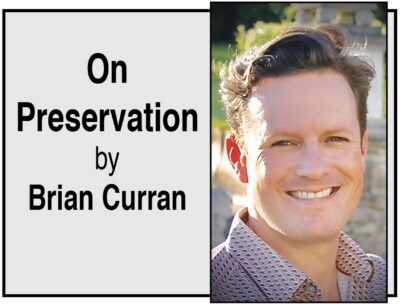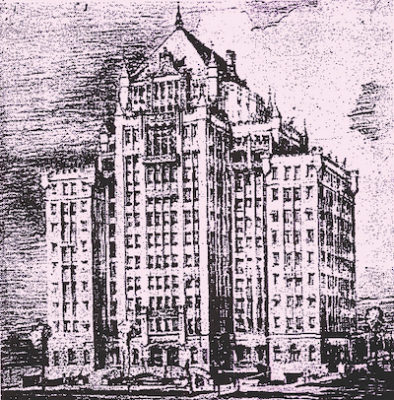On Preservation: 410 N. Rossmore and the design of additions to historic buildings
 For a few months now, I have been watching with some interest the saga of 410 N. Rossmore Ave., the sturdy Art Deco stump which sits between the stately dowagers, the El Royale and Country Club Manor, just north of Beverly Boulevard. The proposed project has given rise to multiple news articles, acrimonious review committee meetings and inflamed community passions. It is one of those cases where multiple interests, and multiple issues, collide in a pitched battle over the future of an historic building.
For a few months now, I have been watching with some interest the saga of 410 N. Rossmore Ave., the sturdy Art Deco stump which sits between the stately dowagers, the El Royale and Country Club Manor, just north of Beverly Boulevard. The proposed project has given rise to multiple news articles, acrimonious review committee meetings and inflamed community passions. It is one of those cases where multiple interests, and multiple issues, collide in a pitched battle over the future of an historic building.
Some people side with the remaining tenants and neighborhood opponents — who extol the historic pedigree of the building, decry the loss of rent stabilized units, fear increased traffic and construction woes and the potential of a troublesome coterie of coliving co-eds — while others join with the developer Domos in heralding a new life for the
historic apartment block, a future that promises not only preservation and expansion, but also transformation to meet the needs of 21st century urban living while addressing the city’s need for more affordable housing.

ORIGINAL RENDERING for the apartment building proposed for 410 N. Rossmore Ave., between Country Club Manor and El Royale Apartments.
What is fascinating from a preservation standpoint is that 410 N. Rossmore is an unrealized building. Max Maltzman’s original French Chateauesque design existed only on paper, and Gilbert Stanley Underwood’s Art Deco high-rise barely made it off the ground. Its current truncated form, a handsome yet austere deco design, was completed by the Army Corp of Engineers during WWII. The building is not an Historic Cultural Monument, nor is it in an HPOZ. It only has been
recognized as an historic resource by Survey LA.
Developer Domos has chosen Lorcan O’Herlihy to be the final architect of 410 N. Rossmore, in an attempt to succeed where so many others’ ambitions have failed.
O’Herlihy has produced a design that approaches the building with the dignity and respect it deserves, crowning it not as a chateau like its neighbors, but today’s equivalent, a Hollywood modernist castle, its multiple towers and ramparts of varying scale capped not with turrets and
statuary, but sundecks and swimming pools.
The developer and the architect have both said that their design is intended to follow the Secretary of Interior’s Standards for Rehabilitation, the federal principles and guidelines suggested for the preservation of historic buildings, including additions. Did they succeed? My predecessor at this column, Christy McAvoy, while complimentary of the design, told me she was troubled by the scale of the addition and the potential loss of character-defining features with the reworking of the existing interiors.
In my humble opinion, architect O’Herlihy does succeed, creating a new and exciting addition, considerate of its historic surroundings, compatible with, yet differentiated from, the historic original, set back from the original façade so the addition is obscured at street level, and keeping its extensions to the rear of the
building. I too have concerns about the loss of historic materials and interior character-defining features, which I hope have been recorded and, if possible, retained.
Future landmark?
Ultimately, however, it would be for the Office of Historic Resources and the Cultural Heritage Commission to make the call by answering this question: Would 410 N. Rossmore be eligible for designation as an Historic Cultural Monument if this design is fully executed? Regardless of the answer, there is nothing that prevents the project from going forward as it is by-right, and the city wants more housing.
The question is just tantalizing to those of us who care about such things: Will we have an embellished old monument — or an O’Herlihy-designed landmark — in our midst in perhaps 30 years time?
Category: Real Estate
